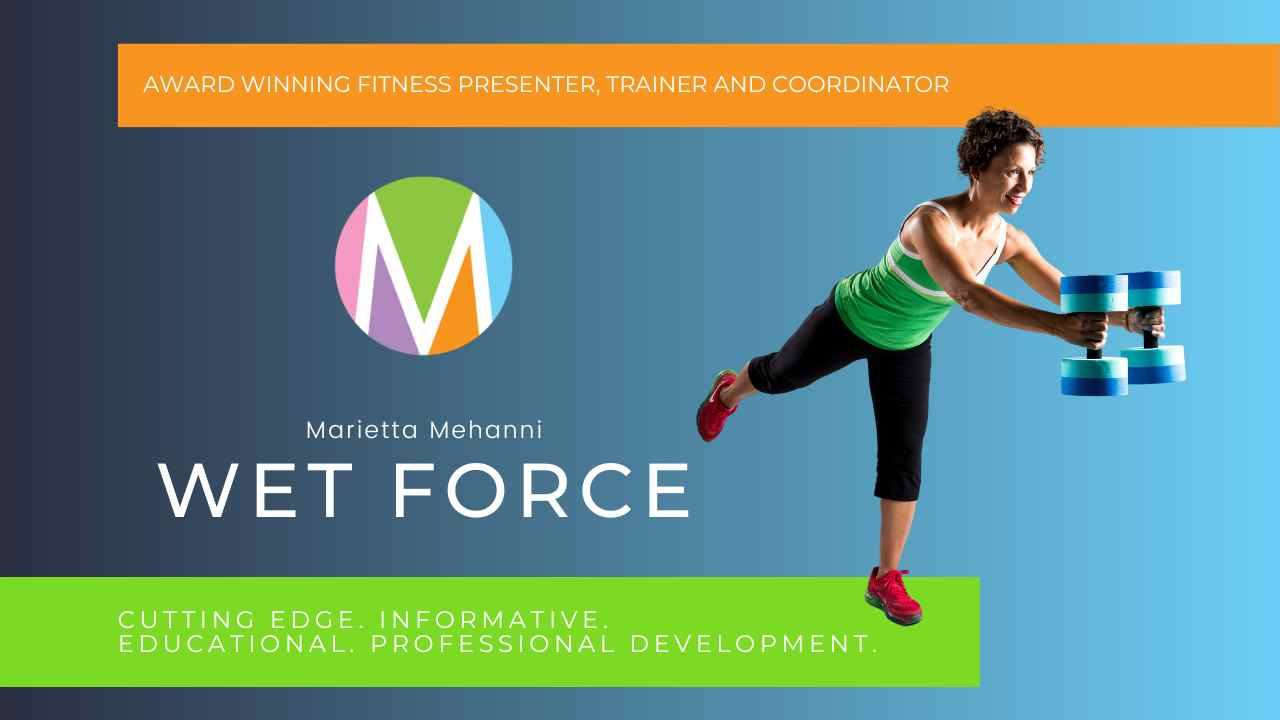How can dumbbells and noodles be used for deep water exercise?
Dumbbells and noodles are popular aquatic tools, predominately in shallow water, for resistance, turbulence and buoyancy-type exercises. But can they be used effectively for a deep water class? These two pieces of equipment can suspend the body very effectively, so it is possible to consider utilising them for deep water training.
There are several advantages to this type of training:
1. When using dumbbells, muscle strength is required to push the dumbbells through the water – strength which is not required when wearing a buoyancy belt.
2. The body, being completely suspended, requires greater muscle recruitment to manoeuvre the dumbbell or noodle through the water, and subsequently, potential muscle imbalances can be highlighted.
3. Dumbbells and noodles can be held in various positions, thus providing countless exercise possibilities.
4. Each position emphasises muscle groups and joint actions differently.
5. Moving equipment through water will create turbulence, providing a more significant challenge for the core muscles to maintain appropriate posture and alignment while performing the exercise.
6. Holding a dumbbell or noodle under the water will create intra-abdominal pressure, consequently engaging the core muscles.
Principles of water and how they apply to dumbbells and noodles in deep water exercise.
Turbulence
Bernoulli’s Principle states that a stationary body in water will always move towards any turbulence because of the negative pressure drag. The greater the turbulence, the greater the instability, and the more intense the workout. Participants will need to work against the turbulence created by their noodles or dumbbells and the turbulence created by other participants using these tools.
Buoyancy: Assisted, resisted and supported
Archimedes’ Principle states that when a body is wholly or partially immersed in a fluid, it experiences a vertical upward force equal to the weight of the fluid displaced and acting through the initial centre of gravity of the fluid displaced. Noodles and dumbbells are buoyant objects; therefore, they can be used both to help float the body and create resistance when forced underwater. Generally, when the noodle or dumbbell is held low in the water the exercise becomes more strength-orientated, and repetitions are performed at a slower speed. However, if the noodle or dumbbell is held close to the surface, the exercise can be performed at a faster tempo, and therefore, the exercise becomes more cardiovascular.
Buoyancy assisted refers to any movements that move in the same direction as the buoyancy, e.g. after holding the noodle or dumbbell down in the water and allowing it to float. Controlling the movement for muscle conditioning on the ‘way up’ can be used as effectively as pushing the noodle or dumbbell downwards. Buoyancy resisted refers to any movements that move in the opposite direction of the buoyancy, e.g. pushing/holding the noodle or dumbbell down in the water. This is effective for strength-based exercises and is also an excellent way to encourage the use of core stabilisers.
Buoyancy supported is when the water supports the body, e.g. holding the noodle or dumbbell under the arms and allowing the body to float. These types of exercises help provide finger release.
Contraindications
As with any exercise mode, there are contraindications when using buoyancy equipment. The main issue is the lengthy handholds required to manoeuvre the equipment through the water. This can raise issues if participants have pathology in the joints of the fingers, wrists, elbows and shoulders. During the second half of their pregnancy, pregnant women could have problems with intra-abdominal pressure against their overstretched abdominal muscles and pelvic floor. It is recommended that women use dumbbells and noodles predominantly as a buoyancy tool (held under the armpits) and under the water for only short periods at this stage of their pregnancy.
Submerged dumbbell and noodle exercises are also contraindicated for people suffering from hernias and other conditions that may be aggravated by intra-abdominal pressure or abdominal bracing.
Finger breaks
One of the implications of using the noodle and dumbbell for an entire workout is the issue of holding the equipment for extended periods. It is essential that ‘grip releases’ are built into the choreography.
Dumbbells: When the arms are held straight down, the fingers do not need to grip the dumbbell as the buoyancy of the dumbbell pressing up against the hand will be enough to hold the dumbbell down in the water. Another popular alternative is to put the dumbbell under the armpits whenever excessive fatigue is experienced. However, this option should not be used as a permanent substitute for the dumbbell’s deep water purpose. In this situation, using a buoyancy belt would be more beneficial. From a technical point of view, shoulder depression, scapula retraction and neutral spine (whenever possible) should be maintained. There is also a tendency to shrug shoulders when hand-held buoyancy equipment is used, so regular coaching on posture is necessary.
Noodles: Use a ‘buoyancy assisted’ method, allowing the noodle to float while performing a lower limb or stabilisation activity. Provide exercises where the noodle is supported so the body and arms can move freely. Educate participants not to grip the noodle too firmly or for lengthy periods. Encourage participants to use only the palms of their hands or body weight to assist with controlling the noodle.


0 Comments